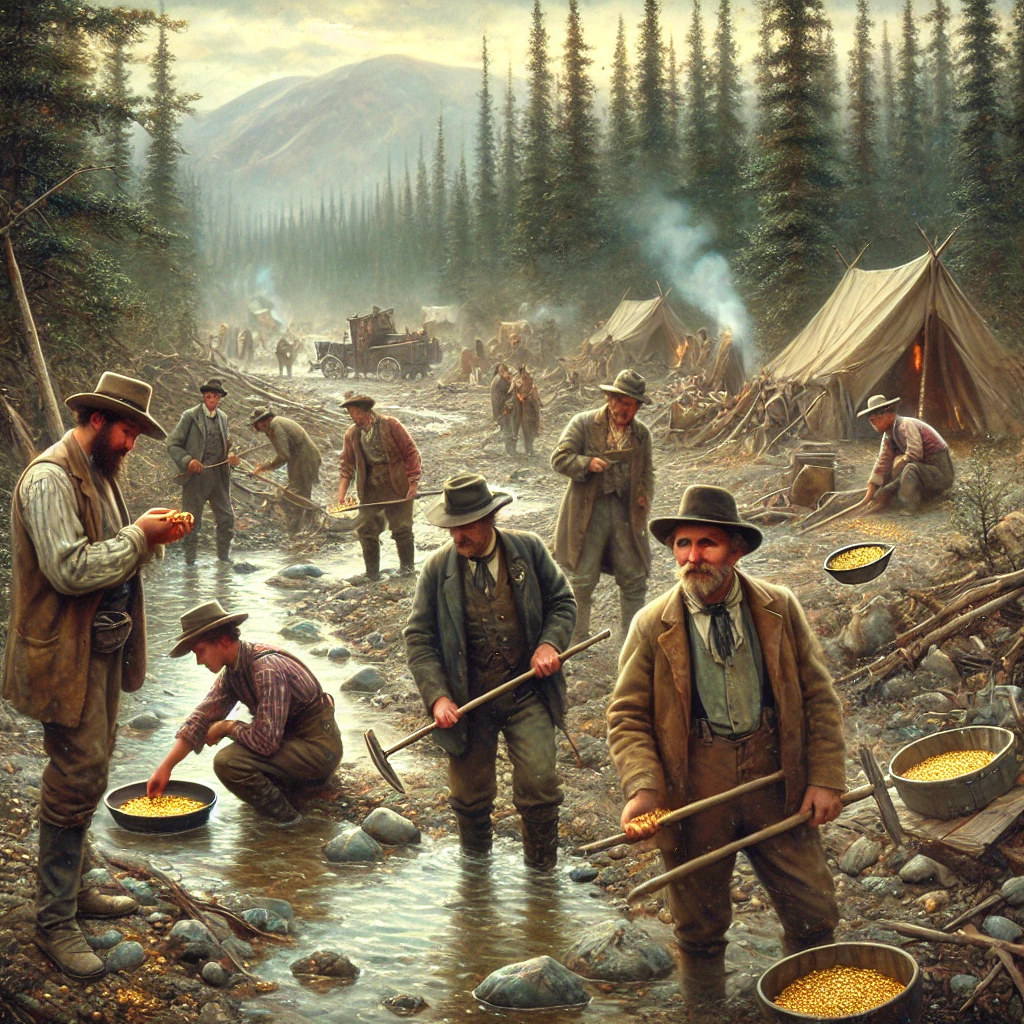On August 16, 1896, gold was discovered in Bonanza Creek, a tributary of the Klondike River in the Yukon Territory. This discovery marked the beginning of the Klondike Gold Rush, a pivotal event that attracted thousands of prospectors and miners to the remote region. The initial find was made by George Carmack, his wife, and two Tagish First Nation people, who stumbled upon gold while panning in the creek.
The news of the gold discovery quickly spread, sparking a rush of excitement and anticipation. The Klondike Gold Rush became one of the most significant gold rushes in history, leading to a dramatic increase in the population of the Yukon as people from all over the world flocked to the region in hopes of striking it rich.

The Rush to the Klondike
The Klondike Gold Rush was characterized by its challenging and arduous conditions. Prospective miners faced numerous hardships, including treacherous terrain, harsh weather, and a lack of supplies. The journey to the Yukon often involved traveling through the rugged Chilkoot and White Passes, which were notoriously difficult to navigate.
Despite these challenges, the allure of potential wealth drove many to undertake the journey. The influx of people into the Yukon led to the rapid development of towns and infrastructure. Dawson City, the main hub of the gold rush, grew from a small settlement into a bustling town virtually overnight, with a population that swelled to around 30,000 at its peak.

The Impact and Legacy
The Klondike Gold Rush had a profound impact on the Yukon Territory and the broader region. The rush spurred significant economic growth and development, as gold mining became a major industry and attracted new investments. The gold rush led to the construction of critical infrastructure, including roads, railways, and communication systems, which laid the foundation for future development in the region.
The demographic and cultural landscape of the Yukon was also transformed, as many prospectors chose to settle in the area permanently. The gold rush brought diverse groups of people to the Yukon, contributing to a rich cultural tapestry and shaping the community’s identity. Although the initial gold rush era eventually waned as gold deposits were depleted, its influence continued to be felt through the ongoing legacy of the mining industry and the historic significance of the Klondike.

Today, the Klondike Gold Rush is commemorated through various museums, historical sites, and cultural events that celebrate this pivotal moment in history. The enduring legacy of the Klondike Gold Rush serves as a reminder of the adventurous spirit and resilience of those who ventured into the unknown in search of fortune and opportunity.
